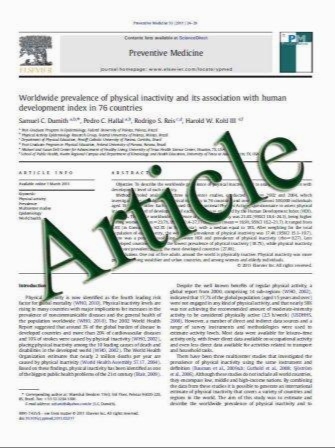Socioeconomic status, race, and bone turnover in the Midlife in the US Study
- نوع فایل : کتاب
- زبان : انگلیسی
- مؤلف : C. J. Crandall & D. Miller-Martinez & G. A. Greendale & N. Binkley & T. E. Seeman & A. S. Karlamangla
- چاپ و سال / کشور: 2011
Description
Summary Among a group of 940 US adults, economic adversity and minority race status were associated with higher serum levels of markers of bone turnover. These results suggest that higher levels of social stress may increase bone turnover. Introduction To determine socioeconomic status (SES) and race differences in levels of bone turnover. Methods Using data from the Biomarker Substudy of the Midlife in the US (MIDUS) study (491 men, 449 women), we examined cross-sectional associations of SES and race with serum levels of bone turnover markers (bone-specific alkaline phosphatase [BSAP], procollagen type I N-terminal propeptide [PINP], and N-telopeptide [Ntx]) separately in men and women. Linear multivariable regression was used to control for body weight, menopausal transition stage, and age. Results Among men, low family poverty-to-income ratio (FPIR) was associated with higher turnover, but neither education nor race was associated with turnover. Men with FPIR <3 had 1.808 nM BCE higher Ntx (P=0.05), 3.366 U/ L higher BSAP (P=0.02), and 7.066 higher PINP (P=0.02). Among women, neither education nor FPIR was associated with bone turnover, but Black women had 3.688 nM BCE higher Ntx (P=0.001), 5.267 U/L higher BSAP (P=0.005), and 11.906 ىg/L higher PINP (P=0.008) compared with non-Black women. Conclusions Economic adversity was associated with higher bone turnover in men, and minority race status was associated with higher bone turnover in women, consistent with the hypothesis that higher levels of social stresses cause increased bone turnover. The magnitude of these associations was comparable to the effects of some osteoporosis medications on levels of turnover.
Osteoporos Int DOI 10.1007/s00198-011-1736-5 Received: 19 April 2011 / Accepted: 7 June 2011


